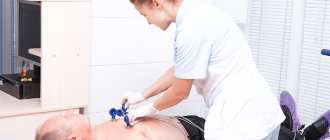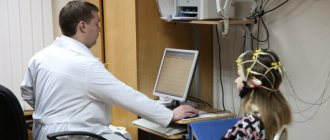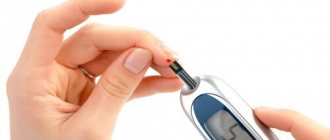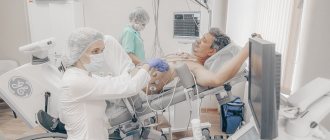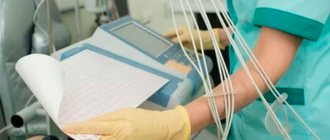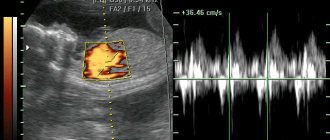Electrical pulse therapy, or rather its variety - electrical defibrillation, is one of the main resuscitation measures for sudden death. As is known, the most common cause of cardiac arrest is ventricular fibrillation. Based on this, the outcome of resuscitation often depends on the ability to defibrillate as quickly as possible.
If an adult patient is in cardiac arrest and a defibrillator is immediately available, it is advisable to use it as soon as possible. If cardiac arrest occurs without witnesses or a defibrillator is not available, it is advisable to begin cardiopulmonary resuscitation (CPR) while searching for a defibrillator to assess the rhythm and administer a shock if necessary.
In practice, defibrillation during CPR is as follows. While continuing to perform cardiac massage, defibrillator pads or self-adhesive defibrillator electrodes are applied to the patient's chest and the heart rhythm is quickly assessed. Assessing heart rate from defibrillator pads or self-adhesive electrodes is faster than recording an ECG. Chest compressions are interrupted briefly to assess the rhythm. Indications for defibrillation are ventricular fibrillation and pulseless ventricular tachycardia. Asystole and electromechanical dissociation are not indications for defibrillation.
The applicability of double sequential defibrillation in a stable shock rhythm has not been substantiated. Double sequential defibrillation is the almost simultaneous application of two shocks using two defibrillators. Although some reports mention favorable outcomes, a 2021 systematic review found no evidence to support double sequential defibrillation and did not recommend its use in routine medical practice. Existing studies are subject to a variety of biases, and observational studies have not shown improvements in outcome.
When using a manual defibrillator: charge the defibrillator (set the charge), then pause the compressions and apply one shock, after which compressions are immediately resumed. Defibrillation should not interfere with the performance of high-quality compressions; pauses between stopping and resuming compressions should be no more than 5 seconds. The level of energy required for each specific defibrillator is determined by its operating instructions. Typically, for a biphasic defibrillator, the first shock level is at least 150 J, for a monophasic defibrillator - 360 J. Before delivering the shock, you must make sure that no one is touching the patient. The medical professional performing defibrillation directs the resuscitation team.
Please note that medical examination gloves do not protect personnel from electric shock when a shock is applied.
When using an automatic external defibrillator (hereinafter referred to as AED), follow its instructions, trying to minimize pauses in compressions.
After defibrillation, CPR is continued for 2 minutes, then the heart rhythm is quickly assessed again. If ventricular fibrillation or pulseless ventricular tachycardia persists, repeat the shock (150–200 J for a biphasic defibrillator or 360 J for a monophasic defibrillator), then immediately resume CPR (without pausing to reassess the rhythm and determine the pulse), beginning with chest compressions ( ratio with artificial breaths 30:2). Continue CPR for 2 minutes, then quickly assess the rhythm. If ventricular fibrillation or pulseless ventricular tachycardia persists, a 3rd shock is applied (150–200 J for a biphasic defibrillator or 360 J for a monophasic one). CPR is then immediately resumed (without pausing to re-assess the rhythm and determine the pulse), starting with chest compressions (ratio to rescue breaths 30:2).
If there is no recovery of cardiac activity after the 3rd shock, 1 mg of epinephrine (can improve myocardial blood flow and increase the chances of success of the subsequent shock) and 300 mg of amiodarone are administered through venous (or intraosseous) access. Medicines are administered as a bolus diluted in 10 ml of 0.9% sodium chloride solution or against the background of infusion of solutions.
The administration of epinephrine at a dose of 1 mg is repeated after every 2 cycles of CPR (every 3-5 minutes) until the patient shows signs of life or biological death is declared.
The next administration of amiodarone at a dose of 150 mg is possible after the 5th attempt at defibrillation. If amiodarone is not available, lidocaine is administered at a dose of 1 mg/kg (do not administer lidocaine if amiodarone has already been administered). In the case of persistent ventricular fibrillation or pulseless ventricular tachycardia, possible reversible causes of cardiac arrest are excluded.
Types of devices and their structure
A defibrillator is a medical device that generates powerful high-voltage electrical impulses.
Modern devices differ little from their predecessors, consisting of a capacitor, charging and discharge circuit with a pulse generation circuit - biphasic current. New models have a built-in electrocardiograph to assess the success of manipulations. Today there are the following types of devices (examples are shown in the photo):
Manual external defibrillator
Such a device requires professional skills. It is used in conjunction with a cardiograph, which, depending on the type of device, can be built-in or separate. The healthcare professional determines the heart rate and the shock needed.
Manual internal defibrillator
It is used in an operating room directly on an open heart. Has special “spoons” for applying a shock.
Automated external defibrillator (AED)
Designed specifically for inexperienced users or for non-medical personnel (police officers, firefighters, airport workers, train stations, stadiums and other public areas). The device independently detects the heart rhythm and chooses when defibrillation is required and when not.
Using an AED before specialized help arrives significantly increases the victim’s chances of survival. However, it does not replace the use of manual cardiopulmonary resuscitation (without artificial respiration).
Implantable cardioverter defibrillator
This device is similar to a pacemaker (artificial pacemaker); some modern models can act as a pacemaker. The implant continuously monitors the patient's heartbeat and automatically delivers a small electrical shock (a process called cardioversion) if it detects a life-threatening arrhythmia. This does not cause discomfort and significantly prolongs life.
Portable cardioverter-defibrillator
The patient wears the cardioverter on a special belt. The device is necessary for those who are at the stage of preoperative preparation for implantation of a pacemaker. The discharges delivered by the device synchronize cardiac activity.
Indications
- ventricular (ventricular) fibrillation;
- ventricular (ventricular) tachycardia without pulse.
Defibrillation is not indicated if the heart has stopped completely (with asystole and pulseless electrical activity), or when the patient is conscious or has a pulse.
Contraindications
In defibrillation, the patient's life is most important, all other factors are ignored. The only contraindication is complete cardiac arrest. However, during planned cardioversion, manipulations cannot be performed if:
- The patient is taking cardiac glycosides. Otherwise, it may cause ventricular fibrillation.
- Chronic course of heart failure in the stage of decompensation.
- During the procedure, the patient suffers from an acute infectious disease.
- There are contraindications to the use of anesthesia.
- Electrolyte disturbances were detected.
- There are blood clots in the atria.
- Multiple atrial or sinus tachycardia is diagnosed.
- Ventricular hypertrophy or dystrophy is observed.
conclusions
Nowadays, not only every ambulance, but also many public spaces are equipped with a defibrillator. According to statistics, the prevailing number of sudden cardiac arrests occur outside medical institutions.
The sooner a victim who has lost consciousness receives first aid, the higher his chances of survival and health. It is possible to bring a patient with ventricular tachycardia or fibrillation back to life if the heart is started with a defibrillator while simultaneously performing cardiopulmonary resuscitation.
Knowledge of the principles of CPR and your concern can save someone's life.
Further tactics of assisting the patient after an attempt to restore rhythm
If defibrillation is successful, the patient requires observation and care. Often, applying an electrical discharge through the conduction system can cause the development of arrhythmia. Neurological disorders associated with temporary cerebral hypoxia are also possible.
Main goals of further actions:
- diagnosis and treatment of the causes of cardiac arrest;
- minimizing negative consequences on the nervous system.
To do this, the following conditions must be met:
- conducting an ECG in 12 leads;
- conducting encephalography in cases of impaired consciousness (coma) and in patients with epilepsy;
- emergency reperfusion (restoration of blood flow) if the cause of cardiac arrest is myocardial infarction;
- maintaining stable blood pressure and blood glucose levels;
- oxygen supply;
- control of body temperature (within 35-36 ˚C);
- consultation with a neurologist.
Resuscitation actions are stopped:
- if resuscitation measures carried out within 30 minutes are ineffective;
- when declaring death based on irreversible cessation of brain function.
Using a defibrillator in childhood
Ventricular tachycardia, pulseless ventricular fibrillation, is rare in children. However, if this happens, the same rescue measures apply as for adults.
The main difference between defibrillation in children is the choice of electrodes and the device itself, which is based on:
- Size. It is important that the elements cover the correct area of the sternum, but do not touch each other. If the baby weighs less than 10 kg, use pads.
- Device model and child's age. An automatic defibrillator should not be used on children under 8 years of age or weighing less than 25 kg because the defibrillator shock cannot be adjusted. The child's weight is important in determining the correct defibrillator setting. For every 1 kg, 2 J are measured. If there is no effect, the dose is doubled, to 4 J / kg.
Defibrillation in emergencies
In critical situations, defibrillators can be used to stop ventricular arrhythmias. The patient in this case is unconscious.
There are several pathological conditions for which this treatment is indicated:
- Ventricular fibrillation, the rhythm in this case is accelerated and disrupted.
- Trembling as a rhythm, ordered but accelerated.
- Tachycardia when drug treatment is ineffective.
Sometimes, against the background of these disorders, arterial hypotension or circulatory failure is observed.
The clinical picture in this case develops according to the following scenario:
- The man loses consciousness.
- Heartbeats quickly increase.
- The pulse is not felt.
- The patient is considered clinically dead.
CPR should be performed within the first few minutes. If medical attention is not provided immediately, biological death may occur and electrical defibrillation will no longer be effective.
Description of the procedure
Speaking about the fact that this is defibrillation, it should be noted that the procedure is characterized by the passage of a discharge through the ventricles of the heart in order to restore rhythm and normal functionality. That's what a defibrillator is for.
If the goal is to save the patient's life, the procedure is performed by the ambulance crew on duty.
Please note that defibrillation is not effective in cardiac arrest.
First, it is necessary to perform indirect cardiac massage and artificial respiration, and only after restoration of functions and independent contractile movements can one resort to this procedure. The cardiologist, rheumatologist and emergency physician are familiar with the operation of the device.
If the procedure is performed while the electrical activity of the heart is stable, contractility may be impaired, leading to cardiac arrest. And in the case of asystole, clinical death occurs.
